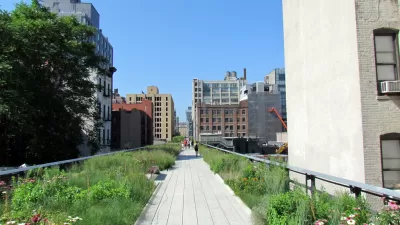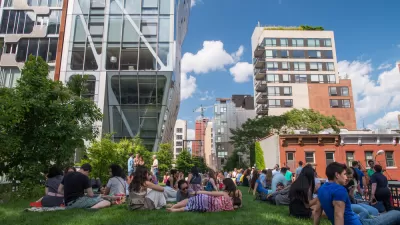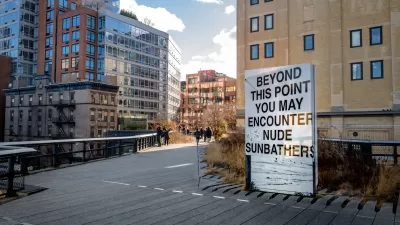The High Line is proving to be a powerful catalyst for development but the same can be true for nearly all parks (less perhaps the starchitect-designed projects near the High Line), explains former Empire State Development Corp VP Carol Berens.

While parks were once seen as a fiscal drain on city budgets, they are now credited with boosting property values and fostering the creation of chic neighborhoods.
An example that proves the point is NYC’s High Line, according to architect, author, realtor, and former redevelopment official Carol Berens. It’s repurposing as a park captured the public’s attention when it first opened in 2009 and sparked the development of high-end residential and commercial projects during High Line’s first phase, specifically new apartment buildings.This growth is no surprise, according to Berens.
“From Central Park’s earliest days to today, private real estate concerns are never far away when parks are created. Ideas for parks unfold when land is contaminated and the surrounding neighborhood stagnant and struggling. A park’s construction and completion greatly influence the life of the city and affect the value of adjacent property—whether from the growth of new neighborhoods, the refurbishment of the old or the promise of unobstructed views in perpetuity. This increased land value from park development leads to fears, not unfounded, of neighborhood gentrification.”
Berens goes on to discuss the various developments around High Line and how condos and apartments around the park don’t come cheap for residents. The article includes many photos of the new developments.
FULL STORY: The New Eldorado?

Planetizen Federal Action Tracker
A weekly monitor of how Trump’s orders and actions are impacting planners and planning in America.

Maui's Vacation Rental Debate Turns Ugly
Verbal attacks, misinformation campaigns and fistfights plague a high-stakes debate to convert thousands of vacation rentals into long-term housing.

Restaurant Patios Were a Pandemic Win — Why Were They so Hard to Keep?
Social distancing requirements and changes in travel patterns prompted cities to pilot new uses for street and sidewalk space. Then it got complicated.

In California Battle of Housing vs. Environment, Housing Just Won
A new state law significantly limits the power of CEQA, an environmental review law that served as a powerful tool for blocking new development.

Boulder Eliminates Parking Minimums Citywide
Officials estimate the cost of building a single underground parking space at up to $100,000.

Orange County, Florida Adopts Largest US “Sprawl Repair” Code
The ‘Orange Code’ seeks to rectify decades of sprawl-inducing, car-oriented development.
Urban Design for Planners 1: Software Tools
This six-course series explores essential urban design concepts using open source software and equips planners with the tools they need to participate fully in the urban design process.
Planning for Universal Design
Learn the tools for implementing Universal Design in planning regulations.
Heyer Gruel & Associates PA
JM Goldson LLC
Custer County Colorado
City of Camden Redevelopment Agency
City of Astoria
Transportation Research & Education Center (TREC) at Portland State University
Jefferson Parish Government
Camden Redevelopment Agency
City of Claremont




























